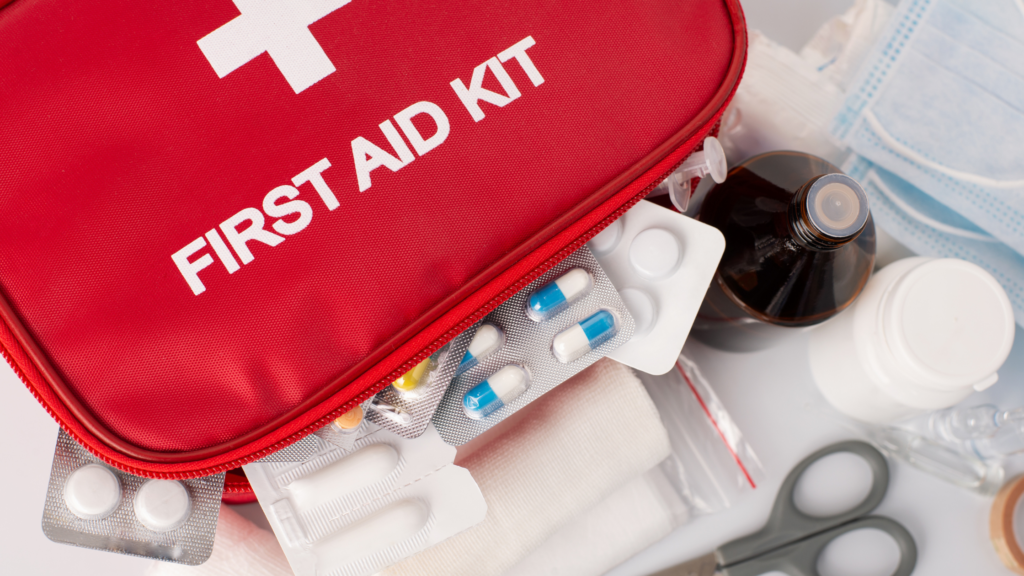Table of Contents
Does your loved one have a first aid kit for home use?
If not, you may want to consider putting one together for them. A first aid kit can be a lifesaver in an emergency.
Here are 5 tips for building a first aid kit for home use for seniors.
A first aid manual is an essential addition to any home.
It provides step-by-step instructions for care in various situations, from minor cuts and scrapes to more severe injuries.
The manual can also be a valuable resource in a natural disaster or other emergencies when professional medical help is unavailable.
Most of the information needed is available with quick search on a phone or computer, but in the heat of the moment, a physical manual can reduce stress and information overload.
If you're making a first aid kit for home use, it's practical to include personal information in the manual.
Indicate medical information about the senior at home. Include information like blood type, medications, and allergies, if any.
A first aid manual should be kept in an easily accessible location. Adding manuals in areas such as a kitchen drawer or nightstand makes sense.
Doing this ensures that it can be quickly retrieved in an accident or medical emergency.
By being prepared with a first aid manual, you can ensure that your senior loved ones are better equipped to handle any medical situation.
Be sure to include supplies like bandages, gauze, tape, scissors, and tweezers.
These medical supplies will come in handy for minor injuries.
Severe injuries may require a trip to the emergency room. But these can minimize the damage while you're waiting for medical help.
It also makes sense to know how to use the bandages during emergencies. Here's a video you can view to learn how.
Ensure all family members know where the kits are located so they can access them immediately.
With a bit of preparation, you can be confident that you will be able to handle any minor medical emergency that comes your way.
Several over-the-counter medications can help manage minor illnesses and pain.
These include pain relievers, antacids, and antihistamines.
Pain relievers can help to ease a headache or muscle pain.
Antacids can help to relieve heartburn and indigestion.
Antihistamines can help reduce the symptoms of allergies, such as sneezing and runny nose.
But while it's practical to keep them handy, it is essential to read the labels of these medications carefully.
It's also necessary to check with doctors if there are any contraindications with medications that your loved ones are already taking.
Many people keep a list of emergency contacts on their phones or computers.
But it is also essential to have a physical copy in an emergency.
You should keep this list safe and ensure everyone in your household knows where it is located.
The list should include the names and contact information of your family, close friends, neighbors, and medical personnel like doctors.
You should also include the contact information for your local police department, fire department, and hospital.
This readily available information ensures that help will always be just a phone call away.

A well-stocked first aid kit is essential to being prepared for any emergency.
Check your first aid kit regularly to ensure that it includes everything you need, and restock it as needed.
Make sure you have essentials for seniors, like antiseptic creams, burn ointments, and band-aids for nicks and cuts.
It's also a good idea to check the contents at least once a year.
See if any expired items need replacement. And make sure to prioritize using the stuff near the expiration date.
By restocking your first aid kit regularly, you can be confident that you will be prepared for anything.
A first aid kit is an essential part of any home, especially for households with seniors.
Seniors become more susceptible to injury and illness. And they may not heal as quickly as when they were younger.
That's why it's essential to have a first aid kit tailored to seniors' needs.
Senior-specific first aid kits typically include bandages, pain relievers, and antiseptics designed to be gentle on aging skin.
In addition, many first aid kits for seniors also come with educational materials that can help caregivers provide the best possible care.
With a senior-specific first aid kit on hand, you can rest assured that your loved one will be well-prepared in an emergency.
It's essential to have a first aid kit in the home, especially if seniors are living in the household.
So make sure you keep these things in mind when creating a first aid kit for home use with seniors.
What are your must-haves in your senior first aid kit? Share them with us below.
That's all for today.
Take care, keep mom safe at home and have a great day!
Winn